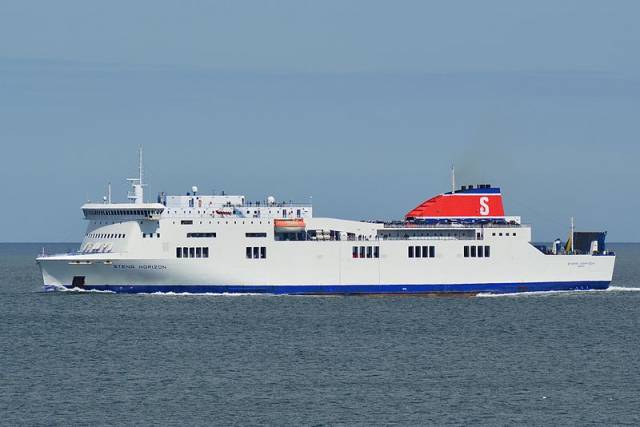#ferry - A car ferry that encountered technical difficulties during a crossing between Ireland and France last weekend continues to remain out of service, writes Jehan Ashmore.
The Stena Horizon with capacity for almost 1,000 passengers and 200 cars had been sailing from Rosslare to Cherbourg, however when the ferry docked in Cherbourg on Sunday, it was later than the scheduled morning arrival.
Following discharging of passengers, cars and freight vehicles at the Quai de France, the 27,522 gross tonnage vessel vacated the linkspan to faciliate another operator albeit serving the English Channel. Afloat has identified this to be Brittany Ferries fastferry, Normandie Express as previously reported serves on the seasonal Portsmouth route until next Tuesday.
The 186m long Stena Horizon is undergoing repairs further along the Quai de France where cruiseships berth next to the Cité de la Mer, a maritime museum.
As a result of the disruption to the three times weekly service between Ireland and France, all sailings on the 17 hour route have been cancelled.
A spokesperson for Stena Line said: “Due to an ongoing technical difficulty with the Stena Horizon, we have had to cancel sailings from Rosslare to Cherbourg this week. Currently we are working hard to have this situation rectified in time for our next scheduled sailing on Saturday 9th September. In the meantime, all affected passengers have been contacted and offered alternative travel arrangements.”
It is more than three years ago when Stena Line acquired the year round operated continental service from the Irish-owned Celtic Link Ferries.
The takeover of operations from the Wexford based owner in March 2014 (see Afloat's report) also involved the current ferry then named Celtic Horizon which can also carry 130 freight units.






























































